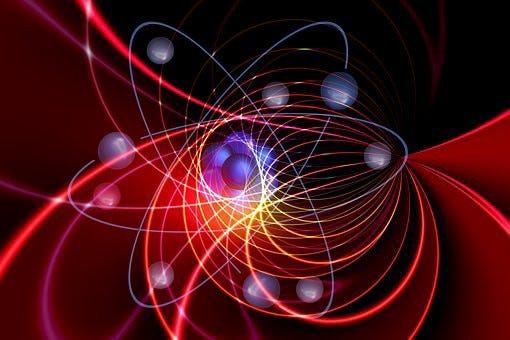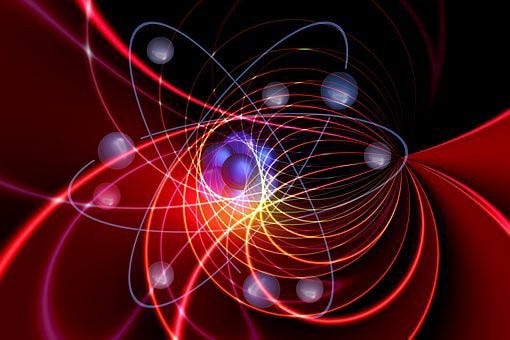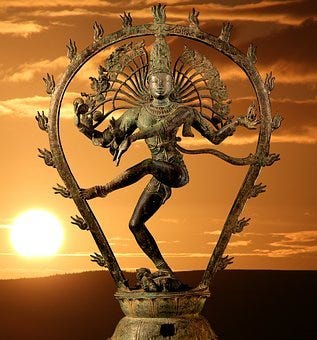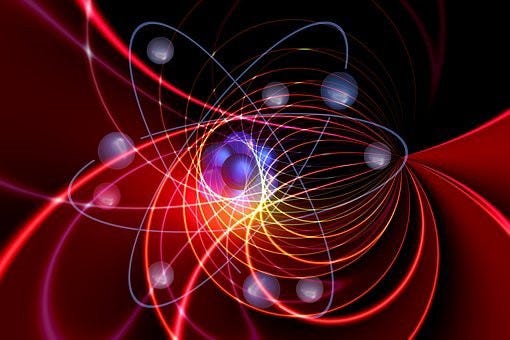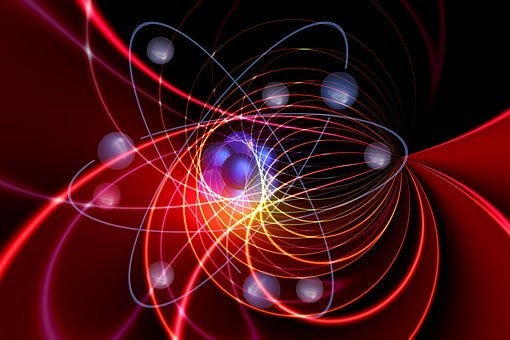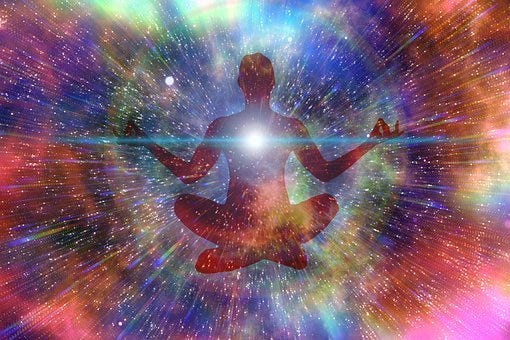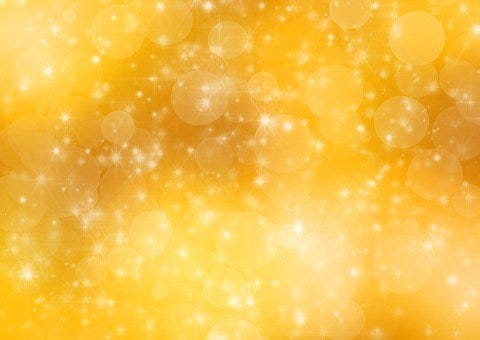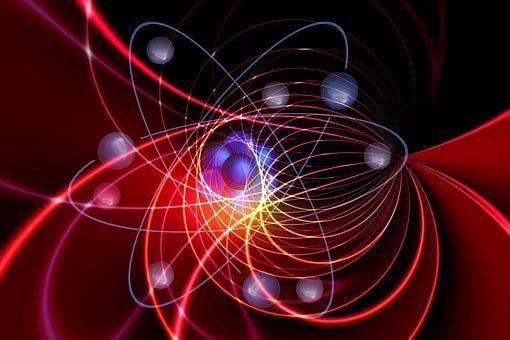
“To the memory of David Bohm, whose intellectual honesty in facing the difficult philosophical issues of quantum theory has been deeply inspiring”. (Norman Friedman, echoed by me)
=====================================================================================
This is the latest in a series about the relationship between the quantum physics revolution and a spiritual worldview. For a guide to what has preceded, see under Religion and Spirituality on the Blog Index Page (click here). It is believed by many that this relationship is real, and highly significant in that it paves the way for a reunification of science and religion. However, in the previous article I discussed Ken Wilber’s claim that there is no such relationship. This new article can be read in isolation, especially if you’re interested in David Bohm, but it will make most sense if you’ve read this preceding article.
In Quantum Questions Wilber, without mentioning Bohm by name, said: “Today we hear of the supposed relation between modern physics and Eastern mysticism… the implicate order, the holographic paradigm…” This is an obvious reference to Bohm’s theories, and Wilber then says that any similarities “where they are not purely accidental, are trivial when compared with the vast and profound differences between them”. It is therefore ironic that a few years later Norman Friedman wrote Bridging Science and Spirit, with the subtitle Common Elements in David Bohm’s Physics, The Perennial Philosophy and Seth¹, choosing Wilber as his spokesperson for the Perennial Philosophy, and making observations about the numerous similarities between their viewpoints. Wilber, having devoted a whole book to explaining that there is no connection between quantum physics and mysticism, is now apparently going to have it explained to him how he has got this wrong! (The Seth material is not relevant to my theme here, so please research this for yourselves if interested — search for Seth/Jane Roberts.)
In my estimation Bohm is the most spiritual of the quantum physicists, and makes the most explicit statements in relation to a spiritual worldview. Below I’ll explore that by following Friedman’s exposition. Before that, here are some of his preliminary remarks.
His book opens with a foreword by Fred Alan Wolf. This is also ironic, since he is another passionate advocate of the relationship between quantum physics and spirituality, who Wilber would think is mistaken, along with Fritjof Capra, the principal target of his complaints in Quantum Questions. Wolf is very complimentary about Friedman’s book, and says that he is a big fan of David Bohm. He reaffirms Wilber’s viewpoint that mystics, unlike physicists, experience the hidden reality directly, but rejects his claim that physics can have nothing to say about this. He believes that David Bohm’s scientific thinking leads to this underlying reality.
Friedman does not seem to be aware of Wilber’s book and his low opinion of Capra. In his preface he is complimentary about the latter, and answers Wilber’s principal objection, saying “Capra is uniquely qualified to comment on these connections because of his research in high-energy physics and his mastery of meditation techniques. His insights are necessarily general because of the differences in approach between the mystic and the physicist, and because the mystical experience is by nature ineffable” (p16).
I’ll turn now to Friedman’s account of Bohm’s thinking.
According to the standard version of quantum physics, particles do not have real existence but have tendencies to exist, and following Heisenberg’s Uncertainty Principle, it is impossible to know both the position and momentum of an electron, which can therefore be predicted only as probabilities. Various physicists, including Bohm, have felt uncomfortable with this model, and “have proposed various solutions in their search for a mathematical construct that will bring determinism back into physics” (p33). (Einstein also disliked the probabilistic model, but could not find an alternative.) This quest to find something beyond and deeper than the probabilistic aspect of events is called the search for Hidden Variables, and Bohm is the physicist most associated with it.
The majority of physicists have rejected Hidden Variables theory, and have therefore retained the probabilistic version, even though it is somewhat mind-boggling. Thus Carlo Rovelli has written recently: “The price to be paid for taking this theory seriously is to accept the idea that an entire physical reality exists that is in principle inaccessible to us… Is it worth assuming the existence of an unobservable world… only to assuage our fear of indeterminacy?². However, what Rovelli dislikes — the existence of a world unobservable to physicists — is precisely the position of Ken Wilber, the eight physicists he quoted extensively in Quantum Questions in support of his views, and also the physicists he criticises — Fritjof Capra, and by implication Fred Alan Wolf (all as quoted in the previous article). As Friedman says: “The basic operations of our three-dimensional world are manifestations of something going on outside our perceived space. The events of our world require an underlying dimension or process. This hidden arena is not definable in mechanistic terms”.
We should not therefore rush to reject Hidden Variables because physicists like Rovelli are uncomfortable with the idea. It’s worth noting that he makes the mistake of calling the unobservable world an ‘entire physical reality’, when of course it is not physical, rather non-material; since the very beginnings of quantum physics the reality of substance has been denied.
According to (John) Bell’s theorem, which I believe is not seriously disputed, any hidden variable theory must involve non-locality, otherwise information transfer would have to occur at speeds faster than light, which is believed to be impossible according to Einstein’s Special Theory of Relativity. Therefore, as Friedman says, “to accommodate both special relativity and his own nonlocal view of reality, Bell postulates the existence of another (or ‘deeper’) level than our universe. The instantaneous interconnectedness of quantum particles must be accomplished outside our three-dimensional universe” (p35).
This appears to be the starting point for Bohm’s thinking. He “has suggested a field that does not inhabit space-time, a transcendental realm in which all places and all times are merged” (p35). Ken Wilber should take note that, contrary to what he says, this transcendental realm is inferred directly from the accepted conclusions of quantum physics, not “trivial” speculations.
The first issue to be addressed is the collapse of the wave function. According to the original Copenhagen interpretation, “the quantum field specifies the probability of finding a particle at a given position in space if one happens to be looking; the particle is a manifestation of the field when observed. When we look at it, it is a particle. When we are not looking, it is a wave, but a wave that is not real”. This wave function is essentially passive: “It cannot stimulate action from within itself. It requires an agent to make a choice among its probabilities for the three-dimensional world to be formed” (p39).
Many physicists have assumed that it must be human consciousness that is responsible for collapsing the wave function and creating external reality. Bohm, however, “feels that there is such an agent within all matter that performs this function”. He “became convinced that a hidden variable theory was possible and that quantum theory (i.e. the Copenhagen interpretation) was not the last word”.
After further reflection on these questions, in 1980 he published Wholeness and the Implicate Order, which presented “a new conception of order in which the nature of reality and consciousness are described as a coherent whole, consisting of an unending process of enfoldment and unfoldment from a hidden level called the implicate order”, which is “the nonmanifest aspect of reality; it is outside space-time”. “This concept, in turn, led to the postulation of a meaning or consciousness throughout nature, which Bohm called ‘soma-significance’ ” (p42). If that doesn’t sound like a spiritual worldview, I don’t know what would.
I’ll now compare the worldviews of Wilber and Bohm. Let us not forget that the latter arrived at his conclusions based on his study of physics, not because he was already attracted to Eastern religions.
Wilber’s worldview is derived from what is known as the Great Chain of Being. Various versions of this have different numbers of levels, even up to twenty, but these precise details do not matter; it is the principle that is important. In Quantum Questions he provides a simple hierarchy of five levels — matter, life, mind, soul, and spirit. He says that “each higher level contains functions, capacities, or structures not found on, or explainable solely in terms of, a lower level. The higher level does not violate the principles of the lower, it simply is not exclusively bound to or explainable by them. The higher transcends but includes the lower and not vice versa… And it is this ‘not-vice-versa’ that establishes and constitutes hierarchy” (p16).
According to Friedman, “Bohm has described a ‘hierarchy’ of levels wherein information from the higher level influences that of the lower level, while the higher level itself is influenced by the next level above it. So, in a sense, we have two aspects at each level, depending on our point of view. Looking downward, we see a more explicated order; looking upward, we see a more implicated order… Each level is capable of organizing levels below into various structures or orders” (p78). Can anyone see any difference between these two viewpoints?
Bohm postulates an ultimate unlimited, undefinable, unmeasurable ground of everything, an unbroken totality which he calls the holomovement. Wilber says: “On the one hand, then, spirit is the highest of all possible domains; it is the Summit of all realms, the Being beyond all beings. It is the domain that is a subset of no other domain, and thus preserves its radically transcendental nature”. How is this different from Bohm’s holomovement?
Wilber continues: “On the other hand, since spirit is all-pervading and all-inclusive, since it is the set of all possible sets, the Condition of all conditions and the Nature of all natures, it is not properly thought of as a realm set apart from other realms, but as the Ground of Being of all realms, the pure That of which all manifestation is but a play or modification. And thus spirit preserves its radically immanent nature”. Thus, “at infinity, we have reached a paradoxical limit: spirit is that which transcends everything and includes everything” (p16). For Bohm his term holomovement, as well as being the highest level in isolation, “the infinite-dimensional ground of All That Is”, is also the totality of all levels, “a spectrum, a continuum of consciousness with matter on its lowest rung” (p72). Again, where is the difference?
Bohm also postulates a hierarchy of implicate orders — obviously analogous to the Great Chain of Being — thus levels of organisation and creativity, “the source from which both our physical and mental worlds are created” (p78). “The second implicate order he calls a source of formative, organizing, and creative activity” (p71). Wilber describes a soul-realm which refers to the level of Platonic Forms, archetypes, and so on. How is this soul-realm different from Bohm’s second implicate order? And yet ‘implicate order’ was one of the “trivial” terms that Wilber mocked in Quantum Questions.
I suggest therefore that Bohm’s worldview, despite the different terminology, is indistinguishable from that of Wilber (thus Eastern religions, the Perennial Philosophy). And it’s not just Friedman that sees great similarities between them. He reports that “Bohm’s ideas and those of Ken Wilbur have been compared in several publications, including interviews in The Holographic Paradigm and Other Paradoxes” (p16). Yet Wilber claimed in Quantum Questions that there was no relationship between the findings of quantum physics and Eastern religions (mysticism). He would seem to be a somewhat lone voice crying in the wilderness.
As I said above, Bohm appears to be the most spiritual of the quantum physicists. We therefore have to accept that he does not represent the mainstream viewpoint although, unsurprisingly, he is frequently praised and quoted in spiritually oriented literature. Was he a genius who saw more deeply into the great enigma, or was he simply mistaken? As I’m not a physicist, I’m not qualified to judge.
I’ll leave the last word to Gary Zukav, whose The Dancing Wu Li Masters featured earlier in the series. He says that, even though Eastern religions differ considerably among themselves, “all eastern religions are compatible in a very fundamental way with Bohm’s physics and philosophy… While it would be naïve to overstate the similarities between Bohm’s physics and eastern philosophies, it would be foolish to ignore them”. He then offers three quotes, saying that, if taken out of context, “there is no absolute way of knowing whether these statements were made by Professor Bohm or a Tibetan Buddhist”. They were in fact taken from physics lectures given by Bohm.
In similar vein to what I just said, Zukav notes that “Bohm’s theories are received with some scepticism by most professional physicists”. However, “they would find an immediately sympathetic reception among the thousands of people in our culture who have turned their backs on science in their own quest for the ultimate nature of reality”. (I have to confess that I would count myself as one of that group.) “If Bohm’s physics, or one similar to it, should become the main thrust of physics in the future, the dances of East and West could blend in exquisite harmony”³.
======================================================================================
Footnotes:
1. Living Lake Books, 1990 and 1994
2. Helgoland, Allen Lane, 2021, p56
3. Fontana/Collins, 1979, p327
